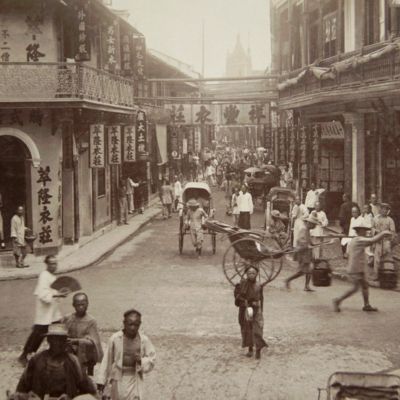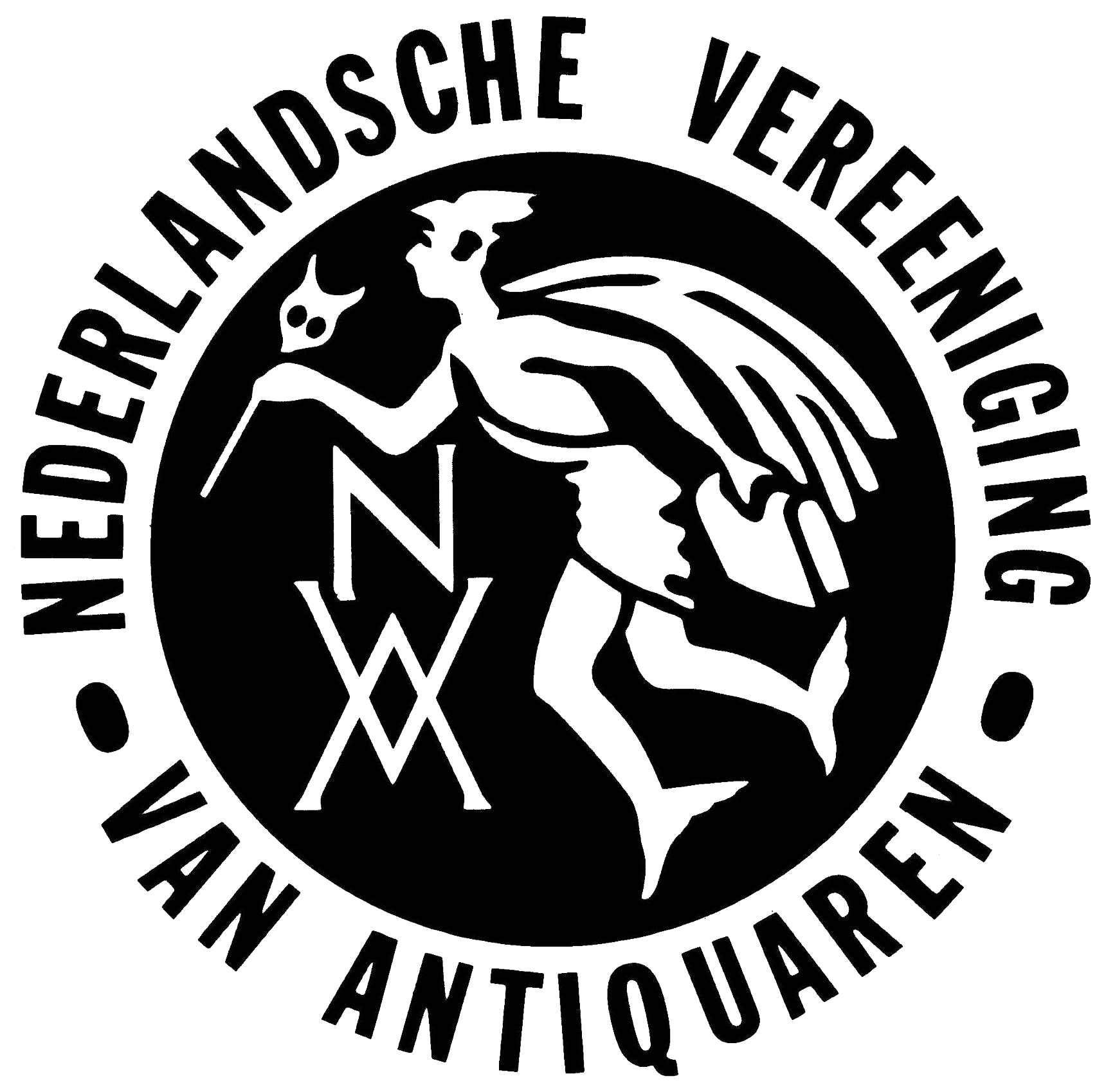Unique photos of China in turmoil - entering the 20th century
[Graf von Waldersee]
Photo Album China.
Published
1900-1905
Item ID
74418
Sorry, this item is currently not for sale. Please contact us for more information.
Shanghai, etc., [not published], 1900-1904. Folio (37.5 x 32.5 cm). With over 220 individual silver gelatine and albumen photographs in original printing, and with original handwritten captions. Mounted on 36 cardboard sheets. Photo sizes from 8.5 x 8.0 cm to 2.0 x 27.0 cm. Later green quarter calf over plain dark blue contemporary cloth. Green endpapers. First and last board backed with floral paper.
A fine collection of highly unusual and informative photos, including many made in China, being a "journalistic" view of the travels, of German military officer Alfred Heinrich Karl Ludwig, Graf von Waldersee (1832 -1904), and his circle. After education in the cadet institutions in Potsdam and Berlin, Graf Waldersee enlisted with the army on 27 April 1850, as a second lieutenant in the Guard Artillery Brigade of the Guard Corps (in 1874 renamed the 7th Field Artillery Regiment). He graduated from the Artillery and Engineering School in 1852. During the German Civil War, Von Waldersee served as an adjutant and - finally - chief of staff in the Royal Prussian headquarters. "Born into a prominent military family, von Waldersee saw distinguished service as an artillery officer, and became Prussian military attaché at the Paris embassy in 1870. This gave him insight into the French defences that would prove crucial in the upcoming Franco-Prussian War, in which he played a significant role. Later, as principal assistant to Field-Marshal Helmuth von Moltke the Elder, Chief of the Imperial General Staff, von Waldersee gained influence with the future Kaiser Wilhelm II, who promoted him Chief of Staff on his accession. When the Peking legation compound was besieged by the Boxer insurgents in 1900, von Waldersee was appointed as head of an 8-nation relief force. Although he arrived too late to take part in the fighting, he conducted punitive expeditions which succeeded in pacifying the Boxers." (Wikipedia). The present album deals with this important phase of Chinese history. Provenance: Wolf Erhard Freiherr von Marschall von Altengotten (1888-1960), an air force officer in World War I. His father, Wolf Rudolf Freiherr Marschall von Altengottern, who probably compiled this album, was on Graf von Waldersee’s staff. This is an important album from the circle of the German Kaiserzeit-Generalität, or German colonial administration, shortly after the Boxer Rebellion, with numerous scenes from everyday life, partly in large format. It shows, for instance, Graf von Waldersee in his study in Hanover; a tour of the Military Riding Institute (Pyrmonts Kurgarten); Von Sydow, Von Rundstedt, Freiherr Marshall v. Poland, Count Rittberg, Von Mitzlaff, Mouteton, Von Rundstedt, Von Kapherr, Freiherr Maltzan, Von Suhr, Griepnitz (Gribnitz) tour XVIII; Army Corps Spring 1900 (Mainz, Frankfurt, Rome); on board the Sachsen; coastal voyage in Umbria, Suez, Suez Canal, Port Said; Count York in bathrobe; at the Consul Freudenberg in Colombo; Penang (botanical garden, Governor's House); Singapore, Hong Kong (Welsh Fusiliers in parade at the port), Shanghai (way to the parade ground, gate, city wall; Chinese Guard, German troops, French troops at the market, cormorant fishermen); Tientsin, Astor House, train station, American camp, Indian camp; transfer of the Red Eagle Order to the Russian General Stössel; Tongku (pacing of the troops), General Gaselee's staff from Beijing to Paoting-Fu Battery Blottnitz (officers); Siling Imperial tombs; Marble Bridge, Animal Avenue; Army High Command in front of the Theatre in the Winter Palace, General Fukushima and Major Tachibana; Major Chaurand de St.
read more
Eustache, Colonel Garrione, Colonel Salsa, Captain Ferigo, General Voyron, General Bailloud, Count Eulenburg with cavalry staff guard; General von Schwartzhoff in his study; breakfast party in the harem garden, breakfast with General Tamon Yamaguchi, Von Boehn, Ferigo, Gayl, Goltz, Gaselee, Voyron, Blottnitz; International Music Grand Piano with German, French, Japanese; entrance to the Winter Palace (headquarters); pavilions in the old harem; Li-Hung-Tschang (i.e., Li Hongzhang) with General Waldersee; coal hill, gate from the south foot of the coal hill; residence of Bishop Favier in Petang monastery; Petang monastery, Richthofen, Bergen, Mumm, Bohlen; German ambassador's apartment; Kettler's grave in the ambassador's garden; Kettler's murderer and his execution at the scene of the crime, January 1901; funeral service for Count York, stepbrothers of the Emperor of China in the German Legation, January 1901; morning music of the Indian Pipers on Waldersee's birthday; Li Hongzhang after dinner in front of the apartment of Field Marshal Waldersee and Prince Chun II (Zaifeng); General Yinchang, Prince Ching, Waldersee, Chofu; the peace broker Chofu near Waldersee; a Chinese princess during a visit Goltz, Wilberg, Königsmark; battery with American horses and mules, a Field Marshall in Shanghai 1901; marble pagoda north of Beijing (staircase, entrance gate, marble relief); Wilberg, Chairrand, Hauptmann Meister, Müller, Krickmeyer, Eulenburg, Grierson, Wedrich; departure June 3, 1901, etc., etc. It is interesting to see photos of General Yinchang (also romanized as Yin Chang or In-ch'ang) and Li Hongzhang, Marquess Suyi (also romanized as Li Hung-chang; 1823-1901). The latter "was a Chinese politician, general and diplomat of the late Qing dynasty. He quelled several major rebellions and served in important positions in the Qing imperial court, including the Viceroy of Zhili, Huguang and Liangguang. Although he was best known in the West for his generally pro-modern stance and importance as a negotiator, Li antagonised the British with his support of Russia as a foil against Japanese expansionism in Manchuria and fell from favour with the Chinese after their defeat in the First Sino-Japanese War. His image in China remains controversial, with criticism on one hand for political and military defeats and praise on the other for his success against the Taiping Rebellion, his diplomatic skills defending Chinese interests in the era of unequal treaties, and his role pioneering China's industrial and military modernisation. He was presented the Royal Victorian Order by Queen Victoria" (Wikipedia). The former, Yin Chang (1859-1928) was a military official, ambassador to Germany, and educational reformer in the Qing Dynasty and the Republic of China. He was appointed the nation's first Minister of War in the late Qing Dynasty. Later, he also became the military chief of staff in the Beiyang Government. He was ethnic Manchu, and his family belonged to the Plain White Banner Clan of the Manchu Military Organization; he held the title of prince of that clan. It is said that during the Boxer Rebellion, when the troops of the Eight-Nation Alliance stormed Beijing to relieve the besieged Legations, Yin Chang, with his German-equipped soldiers, escorted the Emperor and the Empress Dowager Cixi to safe passage through the back gates of the Forbidden City, into the safety of Shaanxi Province, where the foreigners could not reach her. In August 1901, he was appointed the Chinese Ambassador to Germany (in Berlin). In September 1901, by Imperial Edict, Yin Chang was charged with accompanying Zaifeng, Prince Chun to Germany with the special mission to convey China's regret to Kaiser Wilhelm II for the murder of Baron Clemens von Ketteler during the Boxer Rebellion. The mission proved an unexpected success, and Prince Chun was eagerly greeted by crowds" (Wikipedia). Enclosed are two menus of the festive dinner dedicated to the 50th annual military service anniversary. A few photographs somewhat faded, otherwise in very good condition. In all a highly important album with many unique photographic prints showing events typical for Western expansionism and crucial in China's history.
read less




